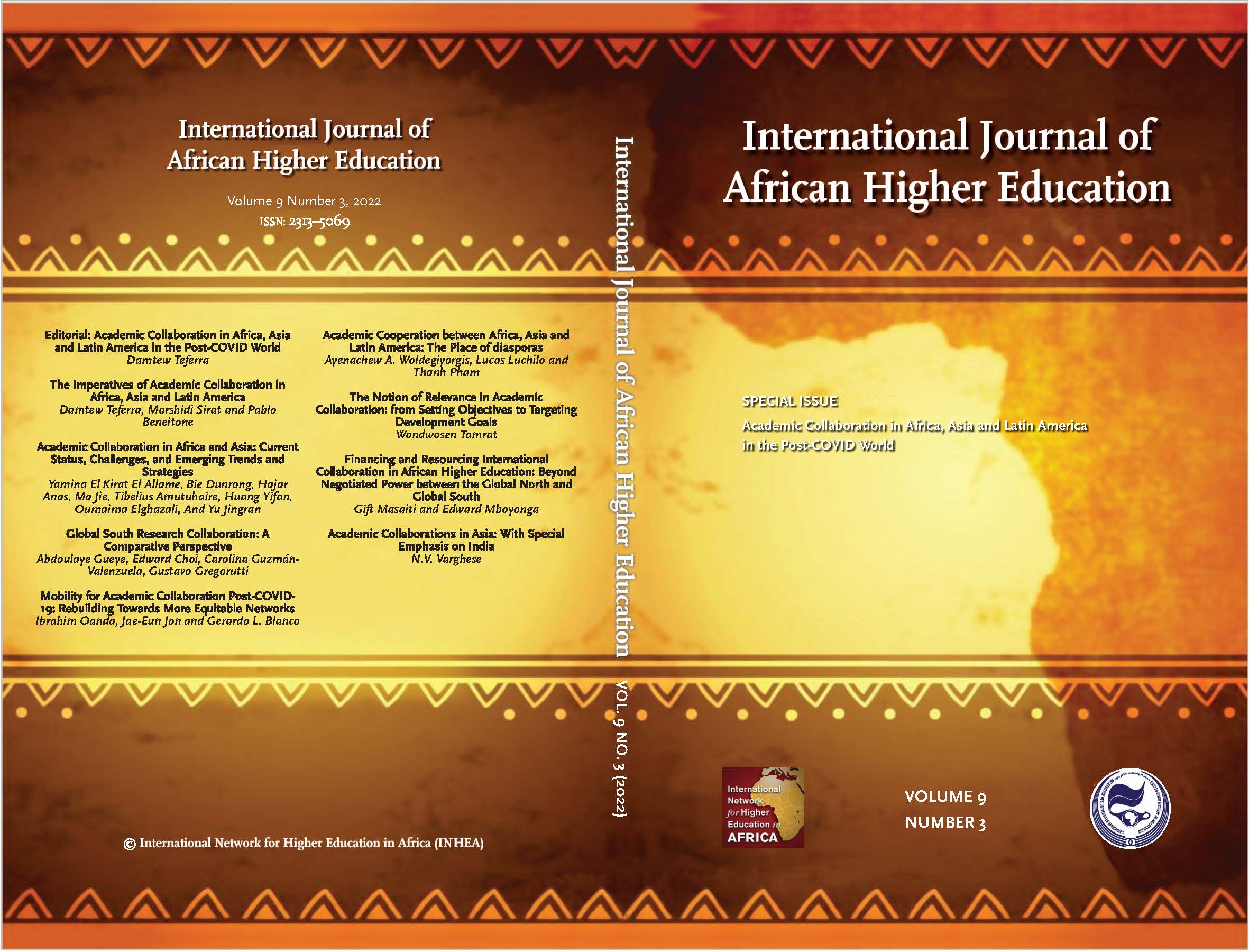Academic Collaboration in Africa and Asia: Current Status, Challenges, and Emerging Trends and Strategies
DOI:
https://doi.org/10.6017/ijahe.v9i3.16041Abstract
South-South cooperation has garnered much attention in recent times among states, policymakers, and academics and its scope is growing to encompass economic cooperation and health, education, research, and development initiatives. This article examines the current status of academic partnerships between institutions in Asia and Africa, the challenges confronting them, and the emerging trends and strategies. Practical examples are provided to showcase the current practices and challenges in each region. The article also highlights academic cooperation experiences during the COVID-19 pandemic and identifies the emerging trends and challenges in academic collaboration in Asia and Africa in the post-pandemic era. It proposes strategies for future NorthSouth, North-South-South, and South-South academic collaboration. During the pandemic, academic cooperation in teaching, learning, and research across borders has demonstrated resilience and sustainability. Increased opportunities for collaboration within, between, and beyond Asia and Africa are being provided by technology-enhanced collaborative modes. However, the digital divide within and across the two continents will impact the future modalities of academic collaboration.
Downloads
Published
How to Cite
Issue
Section
License
Copyright (c) 2022 Yamina El Kirat El Allame, Bie Dunrong, Hajar Anas, Ma Jie, Tibelius Amutuhaire, Huang Yifan, Oumaima Elghazali, Yu Jingran

This work is licensed under a Creative Commons Attribution-NonCommercial-NoDerivatives 4.0 International License.

